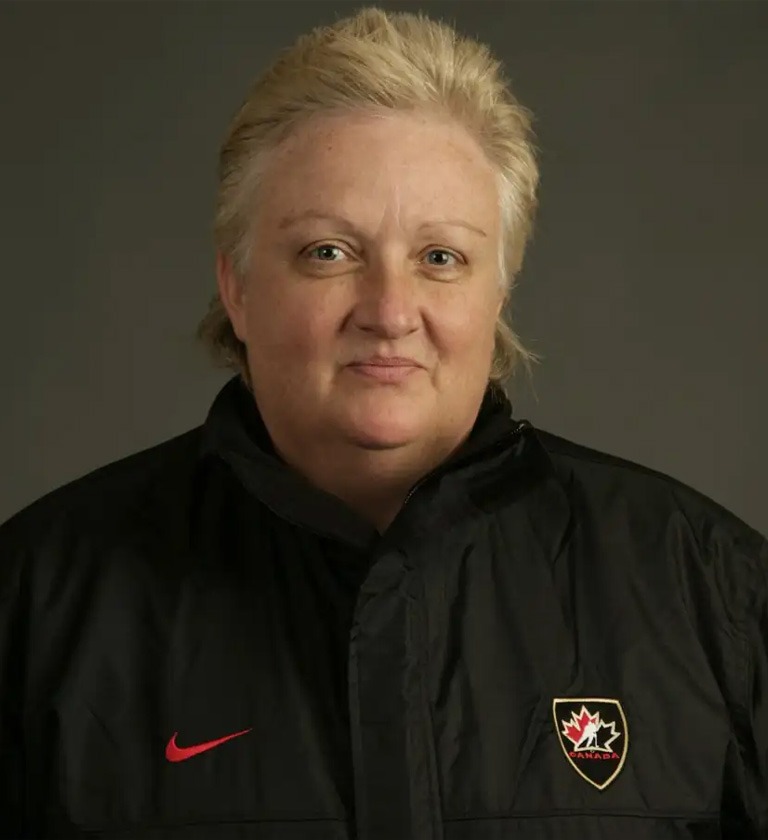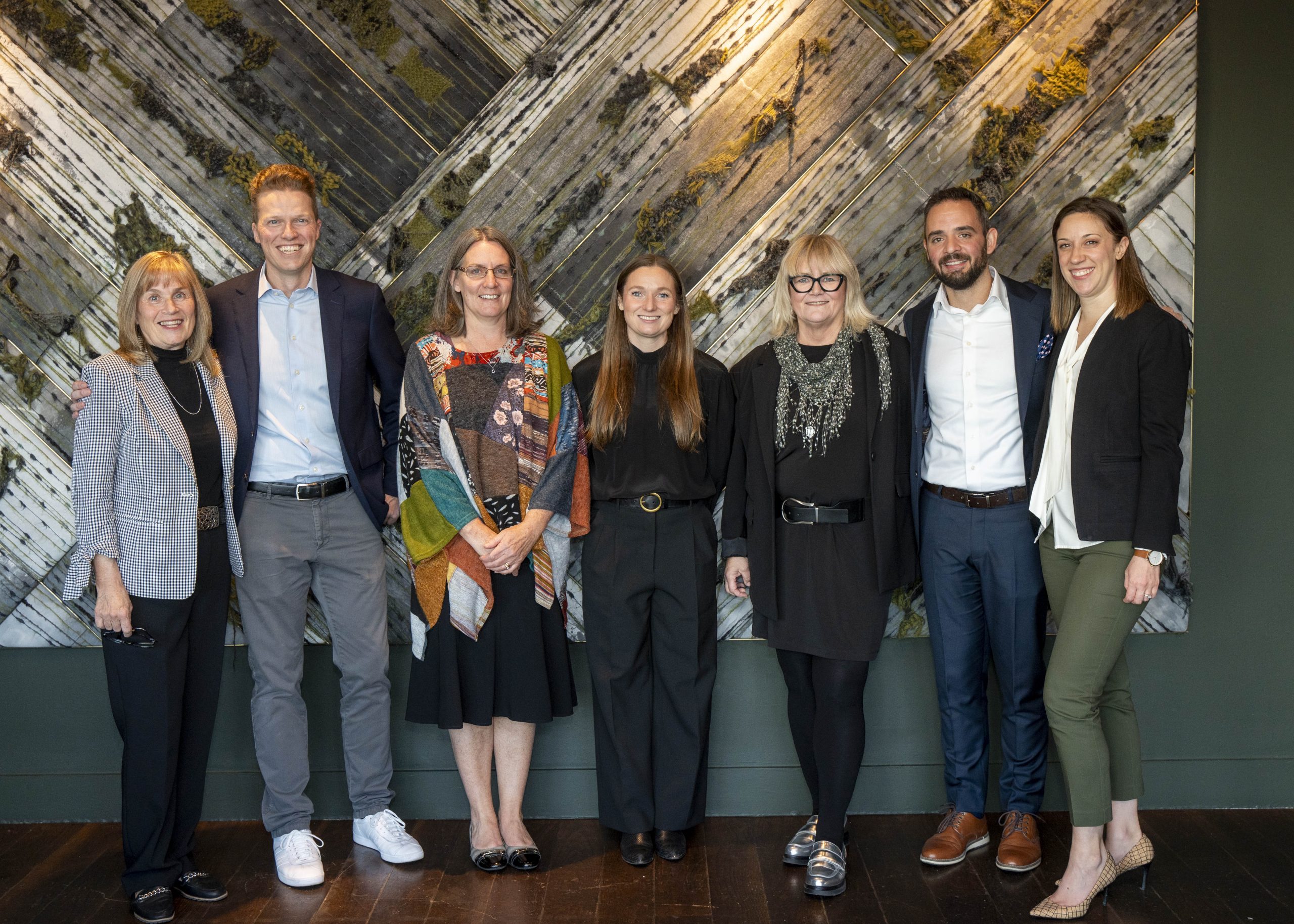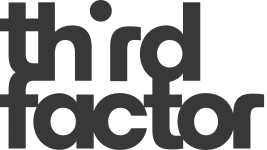When people picture elite sport, they usually imagine the glory: the medals, the anthem, the moment everything comes together. What they don’t often see is the psychological turbulence underneath those performances – the doubt, fear, shame, and self-recrimination that show up when things don’t go according to plan.
Years ago, Third Factor founder Peter Jensen was working with a Canadian national team that was, by all measures, one of the best in the world. They were perennial contenders, a program with history and swagger. And yet, in the first days of a world championship, everything came undone. They lost to their arch-rivals badly, and the shock was devastating.
We’re always navigating the gap between what is and what ought to be. That gap hurts. But the hurt is meaningful. And if we can help people explore that meaning, we unlock the very thing that allows them to grow.
By the next morning, the athletes stood in the hotel lobby looking hollowed-out. Angry. Embarrassed. Anxious. They knew the tournament was short. They knew another loss could knock them out. And they knew they were at risk of spiraling.
This is the territory we work in every day – not just in sport, but in business, education, and leadership. People experiencing disappointment, failure, or the deep discomfort of not living up to their own expectations. As psychologist Kazimierz Dabrowski wrote, we’re always navigating the gap between what is and what ought to be. That gap hurts. But the hurt is meaningful. And if we can help people explore that meaning, we unlock the very thing that allows them to grow.
What follows is how Peter helped that team turn a moment of psychological crisis into the fuel that carried them to a gold medal, not despite their negative emotions, but because of them.
01.
Acknowledge the pain and help people observe it
02.
Move toward compassion, not criticism
03.
Help them find the meaning inside the pain
1. Acknowledge the pain and help people observe it
When Peter asked the players how they were feeling that morning, they didn’t hold back: awful, embarrassed, sad, angry. A typical response might have been reassurance: You’ll be fine, shake it off, don’t worry about it. But reassurance rarely helps; it often makes people feel more alone in their emotions. Instead, Peter simply said: “Yeah. You look awful.”
It may sound blunt, but it wasn’t judgmental. It was observational. It told the players: I see you. What you’re feeling makes sense. Let’s look at it together.
When the strength coach announced they’d be doing lunges at practice, Peter asked: “How are you going to look doing lunges? How will your teammates know you’re back?” These were reflective questions not about the loss, but about how they were showing up in response to it. They invited the players to step outside themselves and observe what was happening internally. This is the first job of a coach in hard moments: Help people dis-identify from the emotion without dismissing it and let them see the feeling rather than become the feeling.2. Move toward compassion, not criticism
Negative emotions become destructive not because they exist, but because we weaponize them against ourselves. We interpret them as proof: I’m not good enough. I’ll never perform. I don’t belong here. A coach must interrupt that spiral. Peter did this in an unexpected way. That morning, a staff member had told a long, mundane story about buying a T-shirt on sale. The players had zero patience for it. Peter asked the staff member to tell the story again to the entire team. Afterwards, he asked: “Why did he buy that T-shirt?”. Eventually someone answered: “Because he got a good deal.” Peter replied: “Right. He wasn’t going to overpay. He knows what shirts are worth. You guys are overpaying right now.” No judgment. Just compassion and perspective. The point was simple: Don’t pay more than the moment is worth. You lost a game. It hurts. But don’t add interest by beating yourselves up. A coach helps people see the whole truth, not the narrow, distorted version they’re stuck inside.3. Help them find the meaning inside the pain
That afternoon, the team played a weaker opponent and won only 2–0. Instead of relief, they felt further proof that they were failing. So Peter gathered them and asked each player to share what it meant to represent their country. What surfaced were stories of parents driving endless hours to practices, communities fundraising to support them, comebacks from injury, and dreams that had taken years to build. It was emotional. And it was clarifying. The problem wasn’t that they had lost a game. The problem was that they weren’t living up to what the opportunity meant to them. And when people reconnect with meaning, they reconnect with agency. They can choose how to move forward. From that point on, Peter reinforced that meaning daily: At practice: “An American player woke up today preparing to face you in the gold medal game. How are you preparing?” In the weight room: “Can you improve 1% today? What will you do to show you’re getting better?” By naming their pain and understanding its purpose the team turned the emotional energy inward, toward growth instead of self-attack. They never lost another game. They won the gold medal.When negative feelings become a weapon
Negative emotions are not the problem. What hurts performance is when people interpret those emotions as evidence of inadequacy: “I failed, therefore I’m a failure.” This is the voice of the critic – a destructive internal narrator that convinces us we’re incapable of growth or unworthy of success. A coach’s role is to challenge that voice by asking better questions:- What is this feeling signaling?
- What is the conflict between what is and what ought to be?
- And what does this moment make possible?
The takeaway for leaders and coaches
Whether you’re leading a national team or a project team, the principles are the same:- Acknowledge negative feelings without trying to eliminate them.
- Help people step back and observe their internal state.
- Guide them toward understanding what the discomfort is pointing to.
Meet our expert: Garry Watanabe, Principal Trainer & Sport Lead

“What is the difference between leadership and coaching?”
The insight: It’s about who chooses the destination
Leadership is about having a vision, enlisting others, keeping the group on course and sustaining motivation on the journey. Coaching is about helping someone clarify their destination, navigate their obstacles, and keep going when the waters get rough. Is there overlap? Of course. Am I missing something? Almost certainly. Both leadership and coaching are about movement – helping people go from here to there. The question is: who chooses the destination?Key Takeaways:
-
Leadership is about setting a vision, mobilizing people, and sustaining group motivation toward a shared goal.
-
Coaching focuses on helping an individual move from where they are to where they want to go—clarifying goals, removing barriers, and offering support.
-
Leadership involves choosing direction and rallying others; coaching helps someone articulate their own destination and progress toward it.
-
Both involve movement and growth, but differ primarily in who defines the goal.
 John Wooden with Lew Alcindor, Lynn Shackelford, Kenny Heitz, and Lucius Allen; Los Angeles Times, CC BY 4.0, via Wikimedia Commons.
Wooden was coaching basketball, but he was also dispensing essential career advice. What he understood was that if you want to be future-proof, the steady refinement of one set of skills isn’t enough.
As Kelly Bradley, the CHRO of RBC, Canada’s largest bank, recently shared: “we talk about [acquiring new skills] as building range. Expanding skills and experiences gives individuals more options and the organization more flexibility. In a world where change is constant, range becomes a strategic advantage.”
John Wooden with Lew Alcindor, Lynn Shackelford, Kenny Heitz, and Lucius Allen; Los Angeles Times, CC BY 4.0, via Wikimedia Commons.
Wooden was coaching basketball, but he was also dispensing essential career advice. What he understood was that if you want to be future-proof, the steady refinement of one set of skills isn’t enough.
As Kelly Bradley, the CHRO of RBC, Canada’s largest bank, recently shared: “we talk about [acquiring new skills] as building range. Expanding skills and experiences gives individuals more options and the organization more flexibility. In a world where change is constant, range becomes a strategic advantage.”
“In a world where change is constant, range becomes a strategic advantage.”Now more than ever, a future-proof career hinges on the ability to acquire new skills that allow you to adapt to a new reality. So, can you get better at building range? Well, that’s where meta-skills come into play.
Skills and Meta-Skills in Action: The Pharmacist
Consider someone who has been a pharmacist for the past 20 years. They came out of University with a Chemistry degree and started working in a job that required two primary skills: chemistry to compound the medication and math to count pills and work the cash register. As technology advanced, the compounding and dispensing part of the role became more automated, and the role of pharmacists expanded greatly to include services like medicine reviews for Seniors, diabetic counseling, celiac counseling, flu shots, diagnosing and prescribing, and more. Suddenly, being a pharmacist also required customer service (or even sales) skills, and the process savvy to manage an automated dispensing process. Fast forward, and we can easily imagine the role evolving to require mental health counseling skills, tech savvy to perform diagnostics to deliver personalized medicine, and more.Figure 1 – A Pharmacist’s Journey: Skills vs. Meta-Skills
 These different sets of skills anchor execution at different points in time – but what enables our pharmacist to evolve from one set of skills to another and remain successful over time are meta-skills. These are the capabilities that allow someone to consistently and repeatedly let go of old skills that have anchored their success and acquire and learn new ones.
These different sets of skills anchor execution at different points in time – but what enables our pharmacist to evolve from one set of skills to another and remain successful over time are meta-skills. These are the capabilities that allow someone to consistently and repeatedly let go of old skills that have anchored their success and acquire and learn new ones.
Getting Better at Building Range: Three Imperatives
The discipline of evolving and building range can be broken down into three imperatives: see clearly, move quickly, and stay the course.01.
See clearly Build self-awareness and empathy.
02.
Move quickly Strengthen flexibility, creativity, and learning capacity.
03.
Stay the course Cultivate resilience
01. See Clearly
Acquiring new skills starts with developing a great radar: Where am I strong? Where am I falling behind? What do I need to work on developing? Self-awareness is half of the battle, but an under-appreciated meta-skill is honing the ability to listen to critique with empathy rather than resistance. When someone points out a gap or limitation in your skill-set – instead of pushing back, consider “what are they seeing that I’m not? How could that help me identify a skill I need to build?”02. Move Quickly
Strengthening learning capacity is at the heart of moving more quickly to build range. The faster you can move up learning curves, the easier it is to acquire new skills. There are many great resources that can help you get better at learning – but one of my favourites (which also happens to be free) is the Learning How to Learn course taught by the wonderful Dr. Barbara Oakley.03. Stay the Course
Finally, the journey of evolution is not a straight line. Adults hate being at the bottom of learning curves, and the journey up those curves is fraught with pressure, discomfort and setbacks. It is much more comfortable to refine one skill set over time than it is to build range. One of the most effective ways to build resilience is to focus on relationships: who else is working towards the same goals as you? Who can you learn alongside? Who will push you, support you, and absolve you of the guilt we all feel from not being enough? Identifying 2-3 people who can be in your ‘training group’ can be a well-spring of resilience.Meta-Skills: Crystal Ball Optional
Jeff Bezos famously said that he built Amazon around the belief that at no point would people want to pay higher prices or have worse product selection. As he stated at the time: “I very frequently get the question: ‘What’s going to change in the next 10 years?’… I almost never get the question: ‘What’s not going to change in the next 10 years?’ And I submit to you that that second question is the more important of the two.” Meta-skills are that rare example of something that will not change. There is no crystal ball required to see that the future will be different than the present, success in that future will require new and different skills, and an ability to spot critical skills, rapidly learn, and stay the course through the learning curve will be an advantage.“Individuals who invest in strengthening their awareness, learning capacity and resilience can become irreplaceable”Investing in meta-skills will pay a guaranteed return for both organizations and individuals. Organizations that invest in building meta-skills at scale will be rewarded with a talent pool that can adapt to new requirements and deploy new capabilities with greater ease and speed. Individuals who invest in strengthening their awareness, learning capacity and resilience can become irreplaceable. Every year, we ask the Third Factor team for their recommended reads for the summer. The lists are always wide-ranging and surprising. Whether you want fiction or non-fiction, inspiring or sobering, funny or thought-provoking – it’s all here. And, if you do pick one of these up – let us know how you like it!
“The Kingdom of Prep” chronicles the evolution of J.Crew, charting its rise from a modest mail-order catalog in 1983 to a powerhouse in American fashion. Drawing on interviews with insiders and industry experts, Maggie Bullock offers a vivid portrait of the brand’s ascent, its cultural significance, and the hurdles it faced in a rapidly shifting retail landscape. Blending fashion, business, and cultural commentary, The Kingdom of Prep provides a compelling look at how a brand can both influence, and be influenced by, the cultural zeitgeist.
“From the Ashes” by Jesse Thistle is a powerful memoir of abandonment, addiction, and survival. Thistle’s journey from homelessness to becoming a celebrated scholar offers a raw, inspiring look at the resilience of the human spirit and sheds light on the struggles faced by Indigenous peoples in Canada. I recommend it because engaging with Canadian history through the lived experience of a Canadian author offers a meaningful and intellectually enriching way to deepen my understanding of my country’s complex social and cultural landscape. Jesse Thistle is Métis-Cree, from Prince Albert, Saskatchewan. He teaches Métis Studies at York University in Toronto, where he lives. He won a Governor General’s Academic Medal in 2016, and was a Pierre Elliot Trudeau Scholar and a Vanier Scholar.
With all the greenery of summer, what better time is there to connect to our literal and figurative roots! Feghali’s book offers a captivating journey into cultural history and ancestral herbalism of the Levant (the “Middle East”). Through beautifully woven stories of folk healing and plant medicine, her book provides a unique and slightly esoteric lens for understanding the often unseen yet profound connection many folks we lead and coach have with their cultural homelands. It’s a great summer read for those seeking an insightful yet gentle exploration of identity belonging, and the powerful ties between peoples, plants, herbs, and ancestral lands.
“10x Is Easier Than 2x” challenges the idea that success comes from working harder and making small improvements. Instead, Hardy argues real success comes from thinking bigger, focusing on what truly matters, and making bold, transformative changes. The book offers a strong core message: aiming for 10x growth requires letting go of the familiar and concentrating on your unique strengths. It encourages you to let go of what’s “good” to pursue extraordinary goals. It offers an inspiring roadmap for breaking through limitations and achieving extraordinary results. It’s a perfect summer read, where the season offers us the time to have the capacity and energy for reflection and renewal, making it a great time to narrow your focus, gain clarity, and embrace the idea of doing less to achieve so much more.
“Challenger” is a tour de force. Author Adam Higginbotham manages to combine a thoroughly researched history of the US space program, culminating in a minute-by-minute breakdown of the Challenger disaster, with deeply personal portraits of both the astronauts and NASA pioneers. Throughout, he shows how the pressure to deliver can warp decision-making, change the way we think about risk and, ultimately, lead to catastrophe – even amongst hugely intelligent and well-meaning groups of people. It’s the rare non-fiction book that is both a gripping, narrative-driven story and also deeply insightful.
In the theme of all that is old is new again, this summer I’ll be reading “The Hitchhikers Guide to the Galaxy” by Douglas Adams. After 40 years of friends, family and co-workers commenting on the deceptive brilliance (and humour) of this book that has fathered a thousand memes – it’s time for me to take the plunge and see what the fuss is still about. If it lives up to its hype, then maybe it’s time for me to cue up the similarly hyped “The Wire” on my appropriate streaming service. The added bonus of my selection is that I have no shortage of people willing to lend me a copy.
Historical fiction is the means by which I travel and learn when my feet are up in the summer. If you love a literary escape too, this substantial read is incredibly satisfying. With a backdrop of political unrest in Ethiopia, then healthcare in the USA, this immersion into the world of medicine is an emotionally compelling family epic. Through a complex web of life stories it is deeply informative about the human condition, our strengths and deficits, and how destinies unfold through tragedy, compassion and expertise. The author is a medical doctor and Stanford professor whose writing is detailed, realistic and moving. This ranks as one of my favourite novels ever.
So many of our conversations feel highly charged these days, like we’re all one comment away from a full-blown debate. In “Outraged”, psychologist Kurt Gray explores why moral outrage has become such a dominant part of public life and what it reveals about human nature. Without minimizing the seriousness of injustice or pretending we can all just “get along,” Gray looks at why we react the way we do to controversial issues, and how our brains are wired to divide the world into heroes and villains. It won’t solve polarization overnight, but it just might help us talk about divisive issues with a little more empathy and a little less heat.
“Sound Man” is a fun and entertaining journey through rock and roll history as told through the eyes of legendary producer and recording engineer Glyn Johns. Johns recorded some of the most famous rock albums of all time by the biggest names in music. His tone is refreshingly no-nonsense, often tinged with dry British wit which I so enjoy. Three rather unexpected reminders I took away from the book were: 1. The value of making connections: never shy away from meeting new people 2. Always be ready to improvise: the ability to think on your feet can be helpful in any situation, 3. Don’t make assumptions: always better to ask than assume.
This summer as I have time to think more deeply, the book I am going to dive into is The Good Fight by Liane Davey. This book challenges the myth that great teams are conflict-free and instead shows how healthy, productive conflict is essential for trust, innovation, and performance. Liane Davey offers practical tools to help you surface tough issues, navigate disagreement with respect, and build a culture where real collaboration can thrive. This book promises to shift how you think about conflict, and teach you how to harness the underlying energy to make changes and gain greater clarity, courage, and connection. If you are also reading it this summer – please share with me the points that most resonate with you and why. I love hearing real stories and examples from the brilliant minds I have the pleasure of connecting with.
I highly recommend “When The World Fell Silent,” a great fictional story that centres on the very real Halifax explosion of 1917 – which was the most powerful explosion in world history until the nuclear blasts at the end of World War II. Weaving multiple intertwined storylines together, it is a terrific mix of history and story-telling that is both moving and fascinating.
“The Culture Map” is one of those books I wish someone had slipped into my backpack years ago. It’s a smart and practical guide to navigating the often invisible cultural differences that shape how we communicate, give feedback, make decisions, and lead in global teams. Back in my days as an athlete, I traveled the world thinking I was pretty adaptable, until I found myself confused in a dozen different languages, misreading cues, and wondering why what worked in one country totally flopped in another. It turns out that “figuring it out as you go” is not a solid cross-cultural strategy (who knew?). Fast-forward to today, I see similar dynamics playing out in the global teams I support. The same awkward moments, just with more Zoom calls and fewer passports. Erin’s book sheds light on why those bumps might be happening and offers a clear, often entertaining way to understand and navigate them. Her stories are relatable, funny, and a little too familiar at times!
If you like a book with great characters, lots of heart and humour along with big doses of hope for the human race this is a great novel; one of my favourites of the year. I found it completely captivating, insightful, and heart warming. It is almost impossible to relay ‘the story’ – there are so many subplots. It is about the lives of people living in a small, poor community made up of European immigrants and Black Americans in the thirties. Their community borders a white, Christian town. There is a mystery to be solved, a boy to be saved, and a community of characters that elevates humanity in spite of our diversity, oddities, and flaws. An underlying moral compass around facing life’s challenges, augmented with some mischief, pervades the book, all relayed with a wonderfully non judgemental perspective and a light touch.
While uncertainty and change present an array of challenges for today’s leaders, a less obvious one is the need to coach for confidence.
Confidence – the inner belief by an individual in their capacity to successfully meet the demands of a performance situation – is an ephemeral quality or state of mind. It’s difficult to observe, quantify or measure, and yet it’s an undeniable performance enabler. When people are confident, they can more fully express their capabilities, and are more willing to make decisions, innovate and take calculated risks.
When the New Zealand men’s National Curling Team undertook a largely self-funded move to Calgary, Alberta to enhance their preparation for the 2024 World Championships, they encountered a frustrating obstacle: rental housing was scarce and expensive. Cassandra Murray, a Retirement Living Consultant with Chartwell, one of Canada’s largest owner-operators of retirement residences, saw their appeal for help on social media and reached out with an offer: the team could stay at the Chartwell Colonel Belcher retirement village during their 2-3 month stay.
Now, having a group of young athletes sharing a living space with a group of retirement residents is not without its risks, but Cassandra saw an opportunity that she was confident could provide huge benefits for all involved. The outcome was not only a heartwarming story, but a win for the team, the residents, the staff and the organization.
 Three-quarters of the New Zealand men’s national curling team in 2023.
Three-quarters of the New Zealand men’s national curling team in 2023.
And that’s the key thing. When we are truly confident, we think win-win. When we lose confidence, we play not-to-lose.
What follows are two practical approaches that we have seen effective leaders use to support the confidence of their people as they navigate change:
01.
Clarify strengths AND how to apply them in the new environment.
02.
Focus on progress, not perfection.
Clarify strengths AND how to apply them in the new environment
During times of significant change, people sometimes lose sight of their strengths or are unsure of how to apply them in new circumstances. As a leader, you may not have all the answers about how things will operate in the future, but you can help your team regain a sense of direction by reconnecting them with their core strengths and how to leverage them in a new environment.
Start by revisiting familiar ground. Encourage your team members to reflect on their past successes and identify the strengths that contributed to those achievements. Ask them specific questions that prompt introspection:
- Where have you been most successful in your current role?
- What skills or abilities helped you achieve those outcomes?
By guiding them through this process, you help them rebuild a foundation of confidence based on what they already know about themselves.
Once individuals have reconnected with their strengths, the conversation should then shift to the new environment. Discuss how their roles are changing, what challenges they anticipate, and what aspects of the new setup feel most daunting. From there, work together to identify ways their existing strengths can be applied to these new challenges. This process of translation—helping individuals see how their strengths remain relevant—creates a bridge between the past and the future.
Focus on progress, not perfection
The second coaching tool you can apply is to help people see progress. A proven track record of accomplishments is a huge source of confidence to rebut doubts, fears and voice of your inner critic. One of the challenges we face when we go through significant change is that we lose that track record. We’ve been successful in the environment and conditions of the past – but have a blank slate moving forward. And so, building a new track record becomes vital.
Start by creating a roadmap that identifies where they want to be six months or a year down the road, and then add-in markers of progress along the way. When our founder, Dr. Peter Jensen, works with a team one of the first things he does is create a visual staircase in which the bottom is the current moment, the top is the target (e.g., “Make the Paralympic team” or “win an Olympic Medal”) and the individual stairs are the key milestones. These can be skill-building initiatives, for example holding week-long winter training camp, or important accomplishments, such as finishing in the top 2 at a qualifying tournament.
It is remarkable how often high performers take for granted how much they know and have learned along the way. The goal for the coach is to highlight that growth and make it visible to the performer.
Once the staircase has been created, get them moving forward with a singular focus on the next step. The smaller the better. When a technical expert with a large US wealth management firm described how she got seasoned investment advisors to be comfortable using Zoom technology for client meetings during the Covid-19 pandemic, she replied “one meeting per day”. She scheduled a daily 15-minute zoom meeting with some of her veteran advisors to get them comfortable being onscreen and to allow them to play around with the technology in a safe, non-judgmental environment.
The value in having the overall framework is twofold. First, it helps the individuals embrace a learning mindset. Peter often reminds teams that “we’re going back to school” and that the key objectives are learning, practice, and improvement – all of which are under our control.
Second, having the roadmap allows the coach to periodically help the individuals and team step back and connect with the progress they have made. This can be particularly useful during a tough slog when it feels like nothing is getting done, or when a set-back occurs to help the team get past the disappointment by reminding them of how much has already been accomplished. It is remarkable how often high performers take for granted how much they know and have learned along the way. The goal for the coach is to highlight that growth and make it visible to the performer.
In Summary
Confidence is essential to sustaining courage through change, but confidence is ephemeral – and building it can be tricky: coaching for confidence requires empathy and a willingness to meet people where they are. With a twin focus on helping people see how their strengths can be applied in a new environment, and helping them connect with progress and small wins as they adapt, you can help them remain the bold, adaptable go-getters you know them to be.
As our business continues to grow, we are very excited to welcome Monique Kavelaars to the team as Director, Assessments & Team Coaching. Monique is the embodiment of Third Factor’s belief in the value of cross-pollinating the best thinking across sport and business. An Olympic fencer, she competed at the World Championships, Pan Am Games, and Olympic Games in 2004 – and brings over 15 years of experience supporting high-performing teams first in elite sport and now in corporate environments. She holds a Bachelors degree in Psychology from York University, is certified in numerous assessment tools, and has helped leaders and teams across North America, Europe, and Asia strengthen leadership, boost team cohesion, and create the conditions for meaningful collaboration.
Alongside her work, Monique continues to contribute to the Canadian Olympic community, most recently serving as an Athlete Mentor at the Tokyo 2020 Games, and currently serves as Vice President of the Canadian Fencing Federation.
As Third Factor’s Director of Assessments & Team Coaching, Monique will draw on her expertise with assessment tools and years of team coaching to maximize the impact of the assessment tools we use in our programs, ensuring that individuals and teams leave with actionable insight about themselves and their colleagues.
Beyond her skills, her belief in the value of both strong coffee and humour will make sure we are never short of energy! Welcome to the team, Monique! At Third Factor, we’ve spent over four decades working at the intersection of business and sport. Our programs have always been shaped by the high-performance principles used by Olympic coaches, elite athletes, and championship teams. Today, we’re proud to deepen that connection with the formation of our Sport Advisory Board—a small, purpose-driven group of leaders who are shaping the future of sport.
The Sport Advisory Board is an extension of our deep involvement in sport, and our philosophy that we find the best ideas by cross-pollinating ideas across different domains. It will help ensure that our offerings in the corporate world stay grounded in the latest insights from high-performance environments. Just as importantly, it provides a space for these sport leaders to access our coaching, consulting, and facilitation services to support their work developing athletes, teams, and organizations.
We’re honoured to introduce the inaugural members of the Third Factor Sport Advisory Board:
She holds a Bachelors degree in Psychology from York University, is certified in numerous assessment tools, and has helped leaders and teams across North America, Europe, and Asia strengthen leadership, boost team cohesion, and create the conditions for meaningful collaboration.
Alongside her work, Monique continues to contribute to the Canadian Olympic community, most recently serving as an Athlete Mentor at the Tokyo 2020 Games, and currently serves as Vice President of the Canadian Fencing Federation.
As Third Factor’s Director of Assessments & Team Coaching, Monique will draw on her expertise with assessment tools and years of team coaching to maximize the impact of the assessment tools we use in our programs, ensuring that individuals and teams leave with actionable insight about themselves and their colleagues.
Beyond her skills, her belief in the value of both strong coffee and humour will make sure we are never short of energy! Welcome to the team, Monique! At Third Factor, we’ve spent over four decades working at the intersection of business and sport. Our programs have always been shaped by the high-performance principles used by Olympic coaches, elite athletes, and championship teams. Today, we’re proud to deepen that connection with the formation of our Sport Advisory Board—a small, purpose-driven group of leaders who are shaping the future of sport.
The Sport Advisory Board is an extension of our deep involvement in sport, and our philosophy that we find the best ideas by cross-pollinating ideas across different domains. It will help ensure that our offerings in the corporate world stay grounded in the latest insights from high-performance environments. Just as importantly, it provides a space for these sport leaders to access our coaching, consulting, and facilitation services to support their work developing athletes, teams, and organizations.
We’re honoured to introduce the inaugural members of the Third Factor Sport Advisory Board:
Mel Davidson

Debbie Low

Jesse Lumsden

Tracy Wilson

 Here are three lessons from Rosie’s talk that can help anyone striving for their own version of a gold-medal performance.
Here are three lessons from Rosie’s talk that can help anyone striving for their own version of a gold-medal performance.
1: Confront failure head-on
One of Rosie’s most interesting insights was slightly counter-intuitive: when the fear of failure is strong, don’t shy away from it – lean into it. Ahead of the Olympics, Rosie consciously worked to confront the possibility of failure directly, and work through her worst-case scenario in vivid detail.“By confronting the possibility of failure, you can free yourself from its grip.”In partnership with her mental performance coach, Rosie sat down and played out two scenarios: what if things go well and I win? And, what if I stumble and fail? With these two scenarios in mind, she vividly worked through how she would feel and what her life would be like: 1 day after, 1 week after, 1 month after, 1 year after, and, eventually, 5 years post-Olympics. Rosie’s realization? Ultimately, the outcome at the Games would have little impact on her life 5 years down the road. Regardless of the outcome she would be okay. This mental exercise allowed Rosie to remove the distraction of fear from her preparation. By confronting failure head-on, she could redirect her energy from worrying about what could go wrong to focusing on what she could control. Whether you’re preparing for a major presentation, launching a new business venture, or pursuing a personal goal – instead of trying to avoid thinking about failure, take the time to visualize the negative scenario. When we “play out the full movie” what we often find is that the fear comes from the fact that we are just imagining a moment in time – an incomplete thought or image that doesn’t reflect the fullness of time. By confronting the possibility of failure, you can free yourself from its grip and focus entirely on performing at your best.
2: Embrace direct feedback
Rosie’s coach, Dave Ross, is known for a style that is extremely candid. While some athletes balked at his bluntness, Rosie saw something deeper: a genuine commitment to helping her succeed. She understood that behind his straightforward critiques was a profound belief in her potential. Instead of resisting his feedback, she consciously worked to lean into it, using it as information to unlock higher levels of performance. This ability to harness the value in blunt feedback came from her taking the time to understand Dave as a person. She took the time to look beyond personality and style to understand his values and ultimately his character. These insights didn’t just unlock her own performance, they also allowed her to help other athletes shift their perspective on Dave’s feedback by sharing her insights into what was behind his style. When you find yourself chafing at direct feedback, consider the intent of the person delivering it. Where are they coming from? What are they trying to help you accomplish? Often, others are trying to help – even when their wording or approach might trigger some reactivity.3: Use visualization to overcome obstacles
In the lead-up to the Tokyo Olympics, Rosie faced a daunting challenge: a series of serious ankle injuries that left her unable to perform her trampoline routine for weeks. In fact, she was unable to practice her full routine until one day before leaving for the Games.“When we imagine something with enough vivid detail – to our body, it’s real.”Rather than letting this setback derail her preparation, Rosie turned to the power of imagery and visualization. Unable to train physically, she trained mentally. This started with simply imagining herself bouncing on the trampoline again. She shared that, initially after the injury, every time she would close her eyes and visualize jumping on the trampoline – she would see herself falling. With effort and (mental) practice, she was able to start to imagine herself jumping with confidence, and eventually to visualize her entire routine in vivid detail. Remarkably, Rosie finished 4th at the Tokyo Olympics— less than a single point off of the podium featuring the best athletes on the world, all of whom had been training regularly, despite having been unable to physically practice until a single day prior to travel. When we imagine something with enough vivid detail – to our body, it’s real. Some studies estimate that for elite athletes, mental rehearsal delivers roughly 85% of the benefits of physical rehearsal. Rosie’s experience certainly backs up that research. Visualization isn’t just for elite athletes. It’s a tool anyone can use to prepare for high-stakes situations —whether it’s a speech, negotiation, or exam—spend time visualizing your performance. Imagine every detail: the environment, your actions, and the desired outcome. This mental preparation can help you feel more confident and prepared when the moment arrives.


























